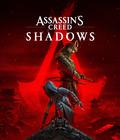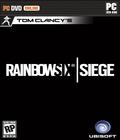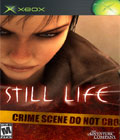Genre: Adventure
Publisher: The Adventure Company
Developer: Microïds
Release Date: April 14, 2005
As a follow-up to 2003's Post Mortem, Microïds' Still Life succeeds where many of its brethren have not, presenting us with a witty, stunning game that boasts an excellent script and fleshed-out characters. As a mix between Syberia and Post Mortem, it looks good from the get-go, combining the charm and graphics of the former with an intriguing murder mystery.
Still Life has you playing as Victoria in present-day Chicago, or as her grandfather Gus in 1920s Prague, and the game will switch between the two playable characters as appropriate. We start off in Chicago, where Victoria visits her dad for Christmas after a long day at work, and they start reminiscing about Grandpa Gus, prompting Victoria to dig around in the attic. While up there, she stumbles across his old case files from Prague, and the details of the case are extremely similar to her current case about a serial killer, right down to the gruesome details.
Once again, we revisit the land of the mouse-driven adventure, where a left-click indicates desired direction of movement, and a double left-click means "on the double." During regular gameplay, the right-click brings up a menu, which allows you to examine or use objects in your inventory, or to read your game journal. Select an item in your inventory, and then choose the desired action - use (hand), examine (eye), or combine (icon with two boxes and an arrow). It's a little clunky, and I kept doing the process backwards, because I think of it as "use book," not "book use," but I guess I'm kind of special that way.
From this menu, you can also perform some administrative tasks such as saving, loading, or quitting the game. The cursor changes to inform you about various interactive items in the game: a compass to bring you to the map, a magnifying glass to further examine an object, a text balloon (or upper-case q) to speak with someone, a wrench to use something, or a circle with an arrow if you can travel in that direction. The interface has improved since the preview build, and each time you acquire a new document, unlock a new location, or get a new journal entry, the appropriate icon gracefully fades in and out in the upper right-hand corner of the game screen.
Now, bear with me here while I remind squeamish gamers and parents that Still Life has an "M" rating. In case the phrases "serial killer" and "gruesome details" didn't clue you in, this game contains more breasts, slain women, whips, chains, blood stains, and four-letter words than you can shake a stick at. Also? Lesbian advances.
Where were we? Ahh yes. What would an adventure game be without the puzzles? For the most part, the puzzles are engaging and intuitive, with clues scattered around the environment to help you with the solutions. There is a visual-spatial brainteaser that I found very intriguing, and another riddle let me flex some lock-picking skills. However, there were two exercises that brought the game - and my brain - to a screeching halt: one involved controlling a spider robot in a room covered with a dozen roving laser beams, and another entailed baking cookies from Grandma McPherson's recipe, which is written in strange euphemisms ("In a bowl, cream together generosity, sweetness and love to give your man a sweetheart."). These portions are frustrating and interrupt the flow of an otherwise engaging experience, as if tacked on to artificially extend the game length.
The superb writing not only progresses the investigation, but also manages to create a great backstory which adds depth to the main characters, something that Post Mortem lacked. I've gone on and on about the script, but no matter how clever it is, it wouldn't amount to much without the accompaniment of solid voice acting. (They're obviously Canadian, eh? But I won't hold that against them.) Luckily, both are present and accounted for, eliciting a few chuckles from me along the way. When she shows up at the crime scene, Victoria sneaks up behind the FBI coroner, Claire, and says in her best Hannibal Lecter voice, "Hello, Clarice!" A minute prior to this, Victoria encounters two maimed plastic dolls hanging from the ceiling of a dilapidated house and remarks, "Whoa, nice Christmas decorations!" The humor certainly injects some levity into the eerie situation and makes the characters more endearing. Ambient sounds are a bit spartan here, but all in all, the rumbling of overcast skies, howling winds, and cawing of menacing crows blend together well and successfully enhance the game's spooky atmosphere.
Graphically, the game is a looker. With more muted tones, Still Life demonstrates that a good-looking adventure game doesn't need to utilize the entire color palette. Love and care can be seen in the crafting of scenes and backgrounds that don't contain any clues. From the outset, the game's cut scenes are just amazing and are perfectly coordinated with orchestral music, as if you're watching a finely-edited movie, where the soundtrack is crafted to elicit the correct emotions. There is always a smooth transition from gameplay to the cut scenes and vice versa, which cultivates the feeling that you're watching all of this unfold on the silver screen.
The biggest change since Post Mortem is the dialogue. When talking to NPCs, you are no longer presented with a long list of questions, which is an improvement because now you can't interview yourself right out of the investigation. You are prompted with an image of a mouse with the left or right button (or both) highlighted, to indicate that you need to further the conversation. When both buttons are highlighted, you have a choice - the left button yields a professional response, while the right gives a more personal response. Otherwise, the dialog is canned and predetermined. It was originally planned that certain interviewees would only respond positively to a certain type of response, but it looks like the idea was scrapped, since I didn't encounter any instances during gameplay.
With wonderful writing, gorgeous graphics, great voice acting, and realistic sounds, Still Life proves that macabre adventure games are finally coming into their own, although there is still room for growth. A couple of the puzzles are frustrating and extraneous. There are also a few instances where Victoria must trek back and forth between locations, a tiresome practice that has come to be expected in adventure games, but that doesn't mean that we should accept it as the status quo. Although its mature content may put off some gamers, fans of procedural crime dramas should have no problem with this title. The Still Life gameplay experience might be brief and occasionally trying, but even with its shortcomings, all you'll remember is how it takes your breath away.
Score: 8.0/10
More articles about Still Life










 Still Life lets you play the role of FBI agent Victoria McPherson. Situated in Chicago, you are on the heels of a serial killer, much like your grandfather did 80 years earlier in Prague (Microids' Post Mortem). By means of flashbacks and timewarps, you will travel to locations like Eastern Europe to interrogate suspects, or North America, to scrutinize dead bodies.
Still Life lets you play the role of FBI agent Victoria McPherson. Situated in Chicago, you are on the heels of a serial killer, much like your grandfather did 80 years earlier in Prague (Microids' Post Mortem). By means of flashbacks and timewarps, you will travel to locations like Eastern Europe to interrogate suspects, or North America, to scrutinize dead bodies.






































